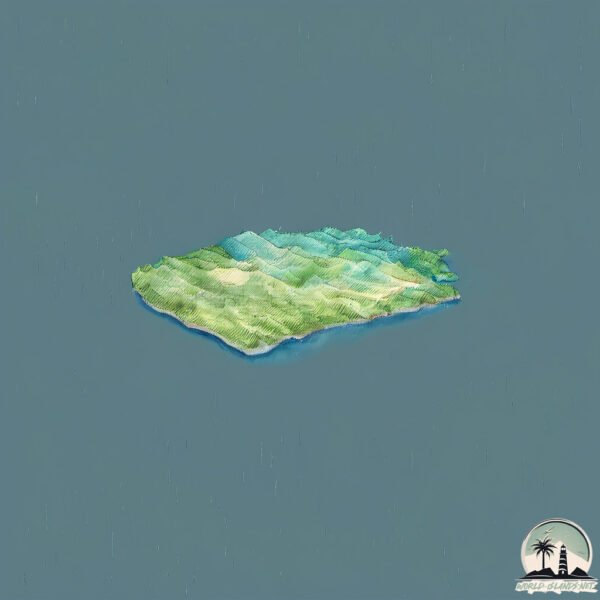Ostrov Kusova

Welcome to Ostrov Kusova, a Continental island in the Sea of Okhotsk, part of the majestic Pacific Ocean. This guide offers a comprehensive overview of what makes Ostrov Kusova unique – from its geography and climate to its population, infrastructure, and beyond. Dive into the details:
- Geography and Size: Explore the island’s size and location.
- Climate and Weather: Weather patterns and temperature.
- Topography and Nature: Uncover the natural wonders of the island.
- Infrastructure and Travelling: Insights on reaching, staying, and making the most of your visit.
- News and Headlines: Latest News.
Geography and size of Ostrov Kusova
Size: 6.179 km²
Coastline: 21.1 km
Ocean: Pacific Ocean
Sea: Sea of Okhotsk
Continent: Asia
Ostrov Kusova is a Small Island spanning 6.2 km² with a coastline of 21.1 km.
Archipel: Shantar Islands – A group of Russian islands in the Sea of Okhotsk, known for their untouched wilderness and rich biodiversity.
Tectonic Plate: Okhotsk – Located in the northwest Pacific Ocean, the Okhotsk Plate encompasses the Sea of Okhotsk, the Kamchatka Peninsula, and parts of Japan. It’s involved in complex interactions with the Pacific and North American plates, contributing to seismic activity in the region.
The geographic heart of the island is pinpointed at these coordinates:
Latitude: 54.71116491 / Longitude: 138.2127044
Climate and weather of Ostrov Kusova
Climate Zone: Continental
Climate Details: Subarctic Climate
Temperature: Cold Summer
Climate Characteristics: Characterized by long, extremely cold winters and short, cool summers, often found in northern latitudes of North America and Eurasia.
Topography and nature of Ostrov Kusova
Timezone: UTC+11:00
Timezone places: Asia/Vladivostok
Max. Elevation: 544 m
Mean Elevation: 299 m
Vegetation: Herbaceous Cover
Tree Coverage: 12%
The mean elevation is 299 m. The highest elevation on the island reaches approximately 544 meters above sea level. The island is characterized by Plateau: Elevated flatlands rising sharply above the surrounding area, with a maximum elevation over 500 meters but a mean elevation less than 300 meters, forming unique highland areas on islands.
Dominating Vegetation: Herbaceous Cover
Comprising mainly of grasses, herbs, and ferns, these areas are common in prairies, meadows, and savannas, and can vary widely in species composition. Ostrov Kusova has a tree cover of 12 %.
Vegetation: 6 vegetation zones – Very Highly Diverse Island
Islands in this range are ecological powerhouses, showcasing a wide array of vegetation zones. Each zone, from lush rainforests to arid scrublands, coastal mangroves to mountainous regions, contributes to a complex and interdependent ecosystem. These islands are often hotspots of biodiversity, supporting numerous species and intricate ecological processes.
Infrastructure and Travelling to Ostrov Kusova
Does the island have a public airport? no.
There is no public and scheduled airport on Ostrov Kusova. The nearest airport is Nikolayevsk-na-Amure Airport, located 318 km away.
Does the island have a major port? no.
There are no major ports on Ostrov Kusova. The closest major port is NIKOLAYEVSK NA AMUR, approximately 327 km away.
The mean population of Ostrov Kusova is 0 per km². Ostrov Kusova is Uninhabited. The island belongs to Russia.
Continuing your journey, Ostrov Prokof’yeva is the next notable island, situated merely km away.
Russia is classified as Emerging region: BRIC: Brazil, Russia, India, and China – Economies noted for their rapid growth and increasing influence on global affairs. The level of income is Upper middle income.
News – Latest Updates and Headlines from Ostrov Kusova
Stay informed with the most recent news and important headlines from Ostrov Kusova. Here’s a roundup of the latest developments.
Please note: The data used here has been primarily extracted from satellite readings. Deviations from exact values may occur, particularly regarding the height of elevations and population density. Land area and coastline measurements refer to average values at mean high tide.
